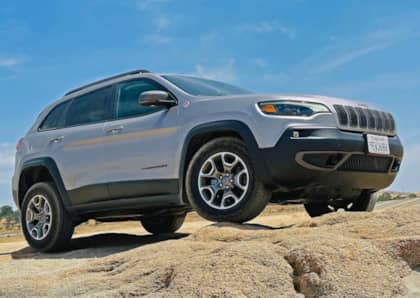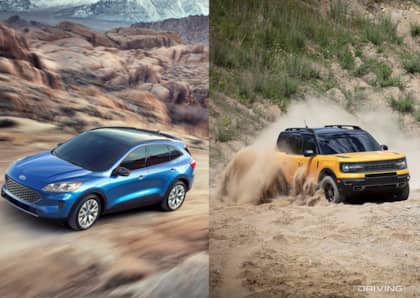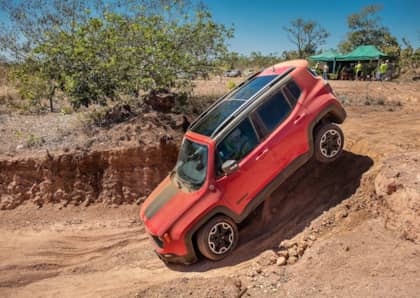Ford Bronco Sport Badlands vs. Jeep Cherokee Trailhawk: Which Compact SUV is your Best Bet For Off-Road Fun?
The Ford Bronco Sport straddles an unusual line in the compact SUV world. Although it rides on a soft-roading unibody chassis (shared for the most part with the Ford Escape crossover), it also makes overtures to the trail crowd thanks to models like the Badlands that leverage electronic driver's aids and aggressive tires to scramble through rougher terrain.
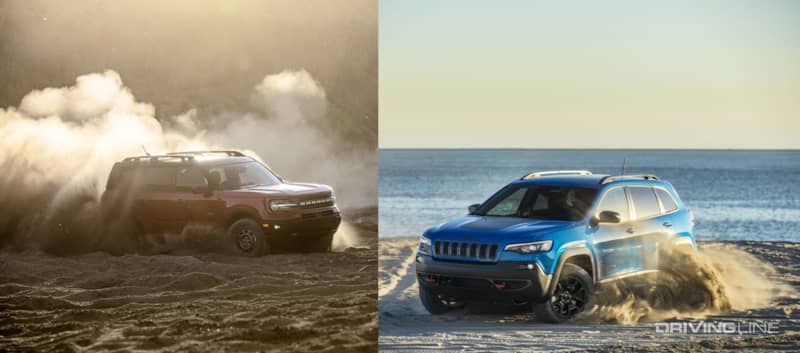
Looking out across the sea of crossover pretenders, there are only a few other trucklets that make a similar effort to ruggedize their appeal. Of these, perhaps none is more focused than the Jeep Cherokee. When found in Trailhawk trim, has a few tricks of its own to drag itself up and over whatever obstacles might lie in its path, all while maintaining the same commuter-friendly character as the Bronco Sport. How do these two would-be trail warriors compare when put head-to-head? Here's a closer look at how the Ford Bronco Sport Badlands and the Jeep Cherokee Trailhawk stack up against each other.
Welcome To The Badlands
The Ford Bronco Sport Badlands is the most expensive trim level on the SUV's order sheet, with a starting price of just over $35,000. For the money, however, it layers on a level of gear that one wouldn't expect to find in a small SUV, including a suspension that offers 7.4 inches of wheel travel and 8.8 inches of ground clearance (a full inch better than the base model), a set of skid plates, and crawl control. It also comes with a terrain management system labeled 'Go Over Any Thing' that features two additional drive modes to handle muddy and rocky surfaces (linking its traction and stability control systems), a torque-vectoring rear differential, and a set of 17-inch wheels and all-terrain tires that measure 28.5 inches tall.
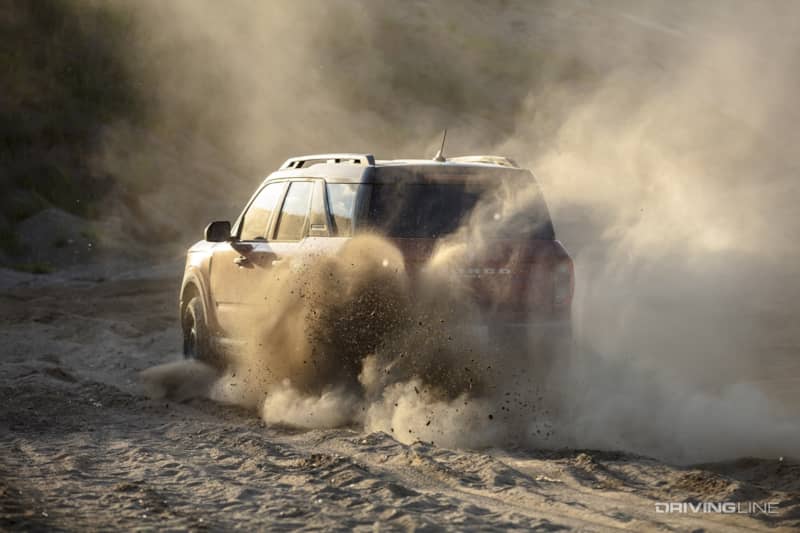
There's also a mechanical advantage to going with the Badlands model, as it installs a 250 hp, 2.0L four-cylinder EcoBoost engine that's turbocharged to deliver 277 lb-ft of torque. That's a worthwhile upgrade over the less impressive 181 hp three-cylinder turbo found elsewhere. An eight-speed automatic transmission is standard, as is all-wheel drive.
Call Of The Trailhawk
Priced roughly $2,000 higher than its Ford rival, the Jeep Cherokee Trailhawk rides on a much older platform as compared to the Bronco Sport, with its underpinnings dating back to the 2014 model year. Still, it presents a formidable collection of equipment focused on pushing past lesser Cherokees once the asphalt disappears.
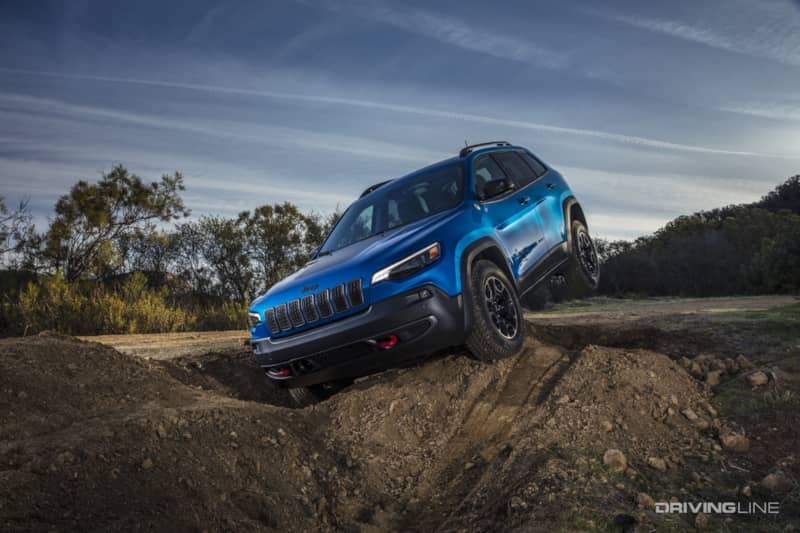
Like the Badlands, the Trailhawk brings with it the largest engine on the order sheet, in this case a 3.2L V6 that’s good for 271 hp and 239 lb-ft of torque (and represents a major step-up over the standard four-cylinder). It's not the most powerful, however—there's a 2.0L turbo four that provides 56 lb-ft of additional twist that isn't available with the Trailhawk. The toughest Jeep trim also installs a unique four-wheel drive system called 'Active Drive Lock' that provides low-range gearing (not available with the Bronco Sport), as well as a locking rear differential and a nine-speed automatic gearbox.
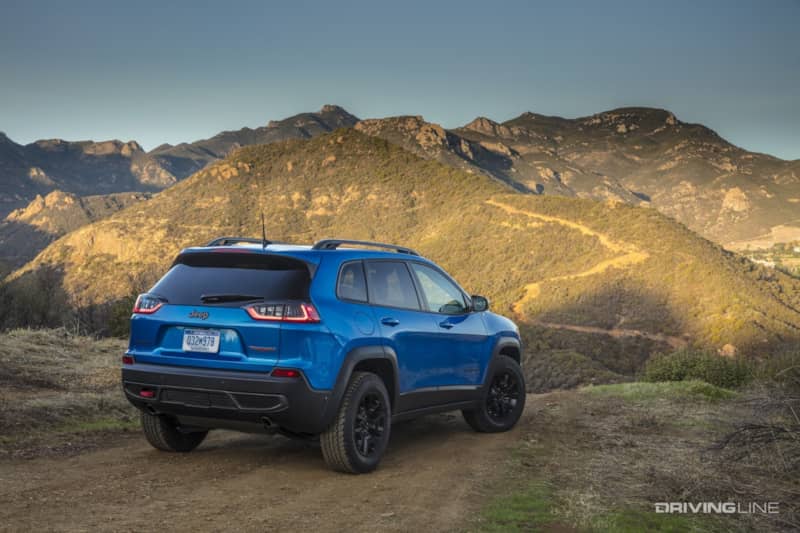
The Jeep's Selec-Terrain drive mode system includes a 'Rock' setting that engages the locker automatically, and which isn't found on other versions of the Cherokee. It features 8.7 inches of ground clearance, which is almost a dead match for the Badlands, and roughly an inch suspension lift versus the base model. It also incorporates abbreviated bumpers front and rear to improve approach and departure angles, as well 29.5-inch overall diameter tires and far more extensive underbody armor as compared to the Ford.
Getting Dirty
Neither of these rigs were conceived with hardcore off-roading in mind. That being said, the Jeep Cherokee Trailhawk is a more than capable performer when it comes to scrambling over loose rock, churning through mud, or picking its way across uneven boulders or humps. The inclusion of true low-range gearing for its four-wheel drive system indicates just how serious Jeep was about giving the Trailhawk chops, and its lower half is protected to the point that it won't tear to pieces should it scrape its way over a too-tall chunk of trail.
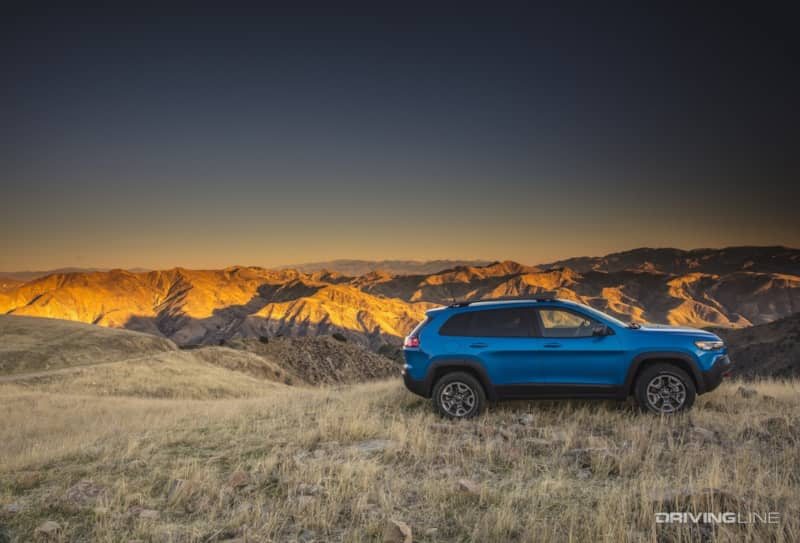
The Ford Bronco Sport Badlands, on other hand, relies far more on electronic intervention rather than mechanical fortitude when it comes to parsing the rough stuff. Yes, it will get you where you want to go, but it's not quite as surefooted in the process. There's slip before there's grip, and you'll have to plan for that when pointing the Sport up a loose surface, or when dangling one or more wheels in the air over a low-speed traverse.
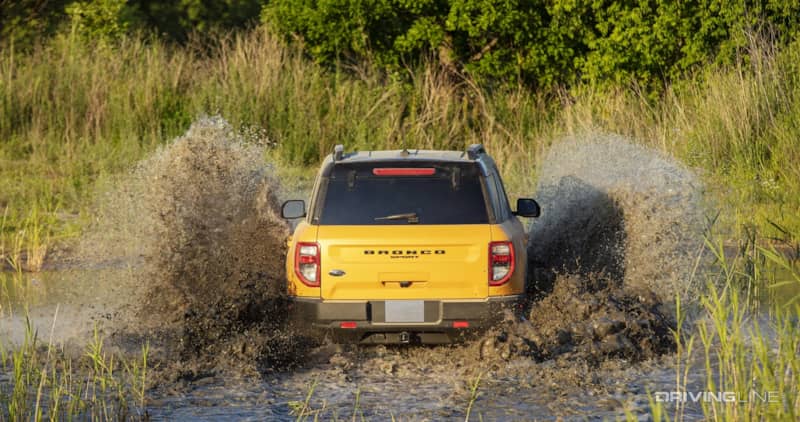
It's also more vulnerable to damage given its more modest cladding. The Badlands is certainly more capable than 90 percent of its crossover brethren, but it's also a classic case of a vehicle that will, in some cases, simply get you stuck that much farther from civilization.
A Difficult Choice
The Jeep Cherokee Trailhawk is a better bet when it comes to 4x4 fun, but that's not the entire story when comparing these two models. The Ford Bronco Sport Badlands isn't just more spacious inside (especially when it comes to hauling cargo), but it's also more modern in terms of technology and design. That translates into additional cabin comfort and much quicker performance from its turbocharged engine (which wins the efficiency battle at the fuel pump too).
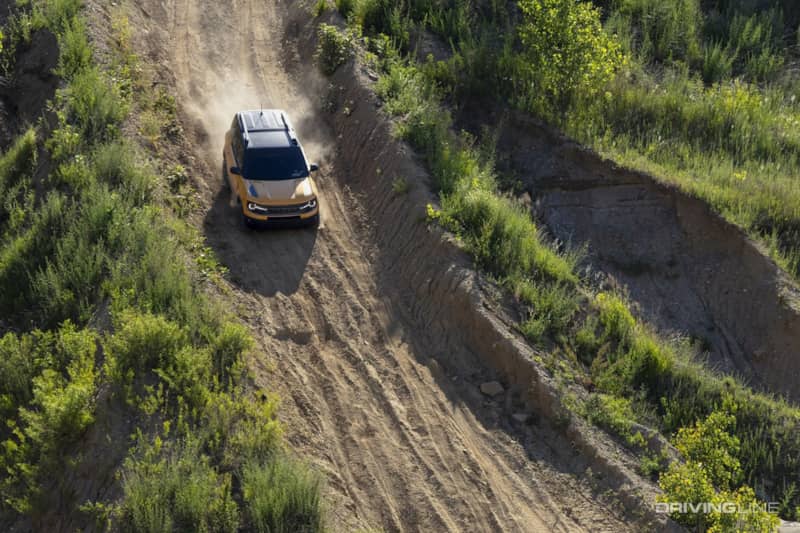
On balance, each of these models is worth considering if you need a smallish daily driver that's still respectable during a weekend slog through mud and muck. As compromises go, you'll have to decide whether the Jeep's focused off-road acumen is worth passing up on the Ford's combination of speed and practicality.




